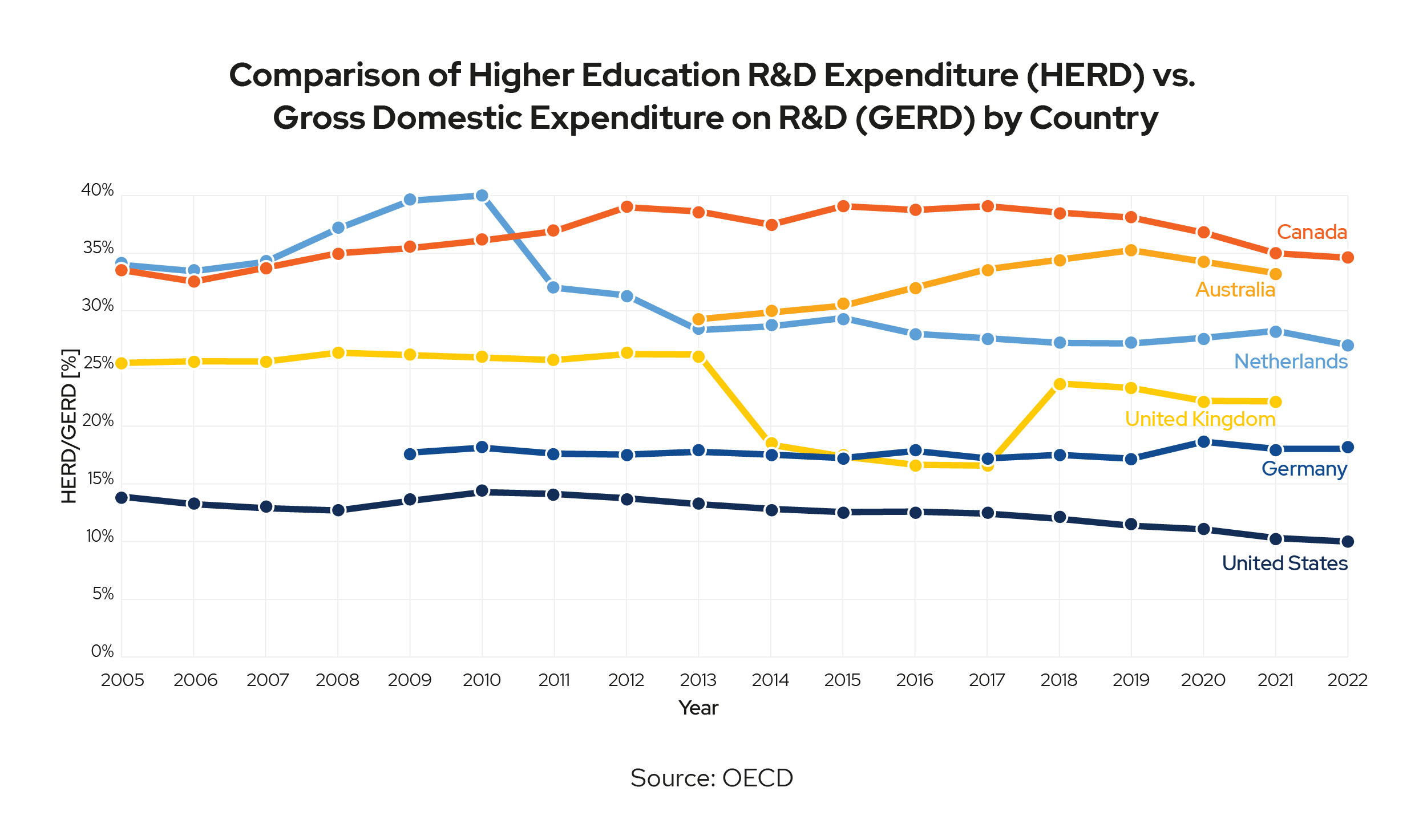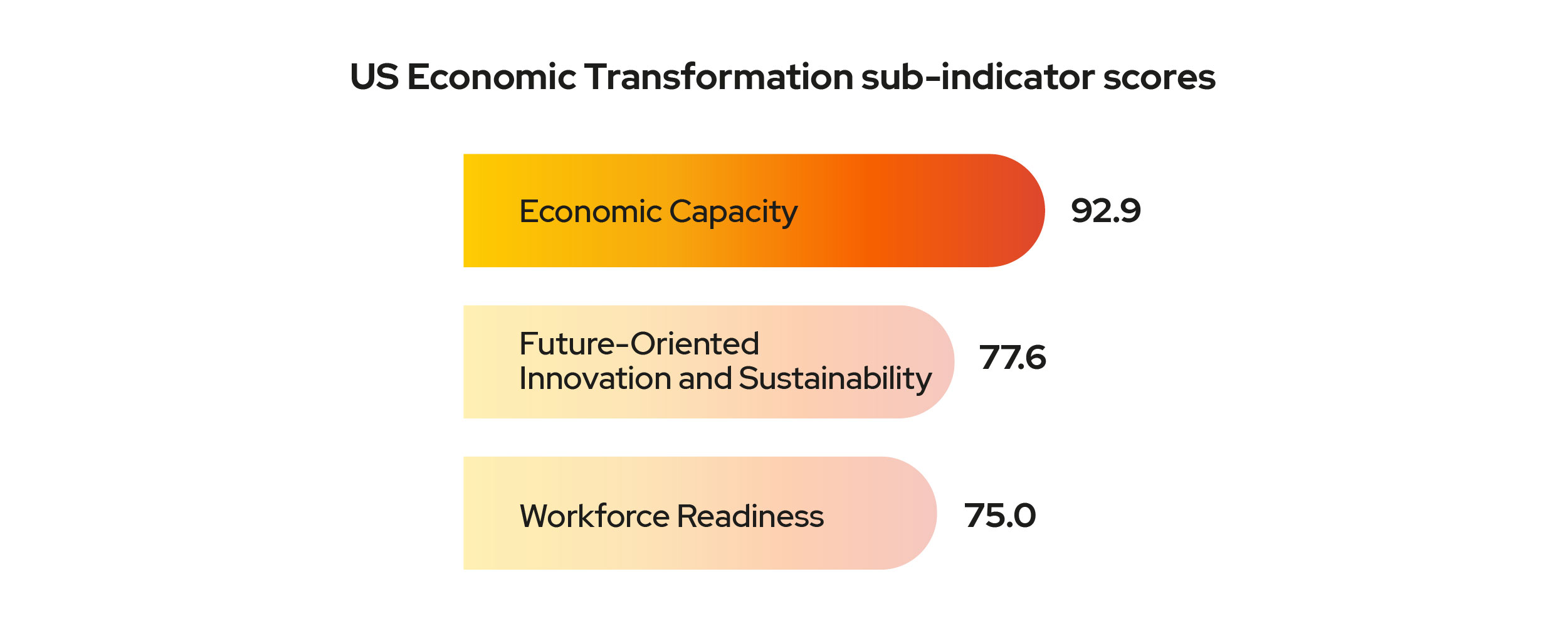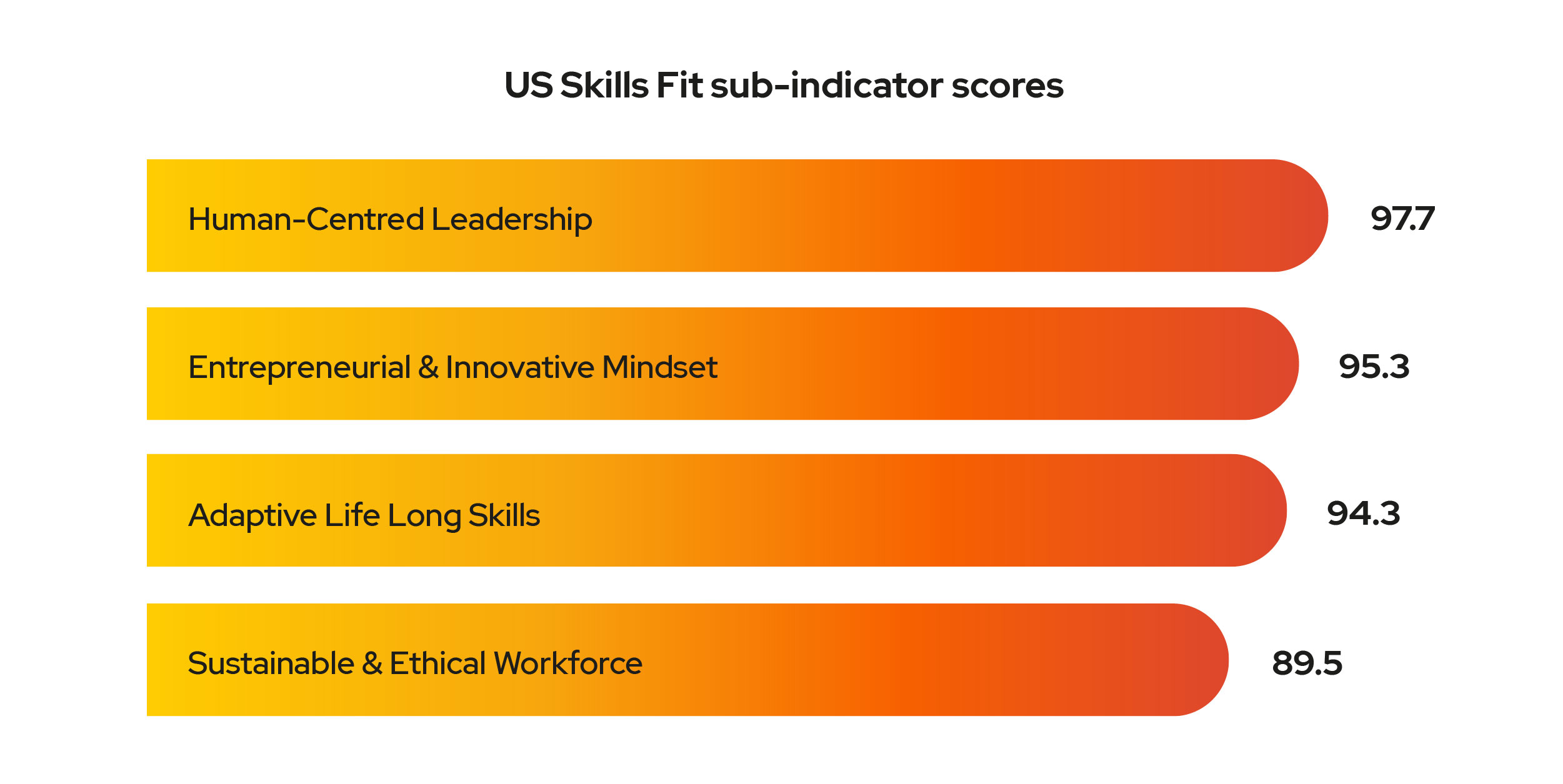Summary:
- The United States must reskill its workers at pace and at scale to realise the potential provided by its strong economic performance
- There is misalignment between the US colleges and industry in crucial skill areas
- Attracting international talent can help close skills gaps while domestic workers reskill in preparation for the future of work
US Performance in the QS World Future Skills Index
As the rate of innovation continues to increase in pace, the US, and countries that perform similarly, will be left with even greater proportions of their workforce who are ill-equipped to work in future industries, and have a higher education system that is struggling to match the upskilling and reskilling demand.
We are already seeing this issue arise with the CHIPS (Creating Helpful Incentives to Produce Semiconductors and Science) Act in the United States. The 2022 legislation directs USD$280 billion in spending over the next decade to bolster US semiconductor manufacturing capacity, catalyse research and development, and commercialise new technology while also creating a larger STEM workforce. However, the US lacks the skilled workers to be productive in the field of semi-conductor manufacturing.
In the context of the 2024 US election, this investment takes on added significance. There is heightened emphasis on import tariffs and the domesticising of manufacturing aimed at reducing dependence on foreign suppliers, especially in critical industries like semiconductors.

A Focus on Self-Reliance and Economic Resilience
This focus, paired with substantial federal funding, contributes to the US's strong Economic Capacity score of 92.9/100 in the QS World Future Skills Index, underscoring the nation’s commitment to securing its position in future-oriented industries.

However, there are signs that the US will not be able to fully utilise the potential benefits afforded to it by such significant investment. To create a bigger workforce, people will need to be upskilled at scale, and the US higher education sector is not totally prepared.
While the US’ performance in the Skills Fit indicator is strong, there remains a misalignment between employer needs and the skills graduates leave university with across the key skill groups.
This skills mismatch comes at a difficult time, with the rise of AI meaning the rate of skills change is increasing, and requisite skills are also becoming more complex. Similarly, the number of green jobs has grown by 8% per year in the past five years, but employees don’t have the skills required to fill them.

Attracting International Talent While Domestic Workers Reskill
For the US, the short-term solution is attracting international talent. International students and skilled worker visas are able to fill these skill gaps. The US must align their immigration policy to the requisite occupations and programmes that are going to drive economic growth in the years to come – such as green, AI and digital skills.
In the long term, the domestic workforce must reskill so they can work in economically more profitable job roles. Singapore has taken the initiative on this, investing S$35m (USD$26m) in sustainable finance upskilling to support the region’s transition to net zero.
Speaking at the World Economic Forum Growth Summit in 2023, Soon-Joo Gog, the Chief Skills Officer at SkillsFuture Singapore explained how Singapore is upskilling and reskilling its workforce27. One example was the Skills Future credits programme, which gives people S$400 when they reach 25 to invest in upskilling
In the QS World Future Skills Index, Singapore has the highest Human Capital Index score of any country – contributing to its high score in our Skills Fit indicator. This shows that, while there is work to be done for the Singaporean higher education system to improve skills satisfaction of graduates domestically, the collective skilling of Singaporean graduates through local reskilling and international education has resulted in elevated productivity in comparison to its global peers.










.jpeg)









